גם ממשלה זמנית יכולה לפעול בהחלטיות כדי לייפות, לבנות ולשלוט בכל חלקי ירושלים.
מי שביקר בירושלים בימי החגים הלאומיים האחרונים נוכח לדעת שבכל סמטה וכיכר ציבורית עלתה האשפה על גדותיה. לכן אין זו הפתעה שבדו”ח האחרון שלו, שהתפרסם החודש, התמקד מבקר המדינה היוצא, יוסף שפירא – שהוא עצמו ירושלמי – בהזנחה השוררת בירושלים.
“באזורי התיירות המרכזיים”, כתב, “כגון רחוב הנוצרים, רחוב הגיא והסמטאות הסמוכות לו, סביבות שער שכם ושער האריות והר ציון נמצאו ערמות אשפה ופסולת, שקיות אשפה תלויות על הגדרות, פחי אשפה העולים על גדותיהם ואשפה צפה בתוך בריכות של מזרקות. ליד מגדל דוד ובהר ציון נמצאו גם כלי אצירת אשפה פתוחים ומלוכלכים שסביבתם גם היא מוזנחת ומלוכלכת”.
הדו”ח בחן גם אזורי תיירות אחרים כמו טיילת ארמון הנציב, טיילת הר הצופים וטיילת עמק צורים ומצא בהם כתמי שתן, צחנה עזה, כבלי חשמל חשופים ואשפה פזורה.
ראש עיריית ירושלים החדש, משה ליאון, הכריז על כך שטיפוח פני העיר עומד בראש סדר העדיפויות שלו, וזה מצוין. אלא שטיפוחה ופיתוחה של ירושלים צריכים להיות מאמץ לאומי הכרוך במימון משמעותי (מימון החסר לעיריית ירושלים הדלה במיסים). השקעה זו חייבת לכלול אלפי עובדי תברואה (יהודים ולא יהודים) שיעבדו גם בשבתות ובחגים דתיים.
מדובר באינטרס לאומי, אם אנו מבקשים שהעיר תהיה מוקד משיכה יהודי ועולמי. מעבר לכך, יש כאן עניין של כבוד עצמי.
חיזוקה של ירושלים הוא משימה אדירה שהיקפה חורג הרבה מעבר לניקיון אביב גרידא. דו”ח המבקר מצביע על מחדלים בשימור אתרי מורשת, בביטחון, בשירותים החברתיים ועוד ועוד. לרשימה שלו יש להוסיף שלוש משימות קריטיות: בנייה, מאבק בגורמים עוינים וממשל תקין במזרח העיר.
נדרשת בנייה של לפחות 6,000 דירות חדשות בשנה רק כדי לעמוד בקצב הצמיחה הטבעי של העיר, שלא לדבר על המאמץ להפיח בעיר חיים לאומיים חדשים עם הגירה של משפחות צעירות – ואנחנו אפילו לא מתקרבים לזה. התחדשות עירונית ופרויקטים של בנייה גבוהה במרכז העיר הם רק טיפה בים.
למרבה הצער בעשור האחרון, לאורך כל שנות ממשלו של ברק אובמה, ואפילו היום מאז מינויו של דונלד טראמפ לנשיא ארה”ב, היקף הבנייה בירושלים שואף לאפס. (הלחצים האמריקאיים מהווים כאן גורם מפתח, משום שכמעט כל הקרקעות הזמינות למגורים בירושלים נמצאות מעבר לקו הירוק.)
הממשלה בקושי נגעה בקצה קצהו של פוטנציאל הדיור במקומות כמו עטרות, גילה, גבעת המטוס, הר חומה, פסגת זאב, רמת שלמה ורמות. גרוע מכך, היא לא עשתה דבר כדי לקדם את הקמת 50,000 הדירות שניתן לבנות בשטח E-1 שממזרח לעיר בואך מעלה אדומים.
כל אחד מראשי הממשלה בישראל, מאז יצחק רבין, תכנן והבטיח לבנות בשטח E-1 מטעמים ברורים, והכורח העירוני והאסטרטגי רק גדל עם הזמן. שטח E-1 חיוני לעתידה הלאומי של העיר ולביטחון המדינה בטווח הארוך.
הפלסטינים והאירופאים טוענים כי פיתוח ישראלי בשטח E-1 יגרום לתקיעת טריז ברצף הטריטוריאלי של השטחים שאמורים להיות חלק ממדינה פלסטינית. למרבה התדהמה, האיחוד האירופי אף מממן את הקמתם של מאחזים פלסטינים ובדואים בלתי מורשים בשטח E-1 על מנת להציב עובדות בשטח ולמנוע פיתוח ישראלי באזור.
אלא שההאשמה בדבר “קטיעת” הרצף הטריטוריאלי, כמו גם הדרישה לרצף טריטוריאלי, הן לא יותר מהסחת דעת. ברור למדי שכל הסדר ישראלי-פלסטיני ביהודה ושומרון יכלול גושים ומעקפים, גשרים עיליים ומעברים תת-קרקעיים, כבישים עוקפים ומרחבים משותפים. יש שפע של דרכים יצירתיות ליצור רצף ראוי למחיה ורצף תחבורתי (במקום רצף טריטוריאלי) במה שיהיה תמיד רשת מורכבת של אוכלוסיות, ערבית ויהודית, בגדה המערבית.
לכן שטח E-1 אינו מהווה בעיה מבחינה זו. רצונה של ישראל לבנות שם אינו יוצר מכשול לשלום עם שותף פלסטיני רציני, לו היה כזה.
האתגר המרכזי השני שישראל צריכה לתת לו מענה הולם הוא החתירה של קבוצות אסלאמיות קיצוניות, שחקנים זרים כמו טורקיה והרשות הפלסטינית, תחת ריבונותה של ישראל במזרח ירושלים.
לדברי ד”ר דוד קורן ממכון ירושלים לאסטרטגיה ולביטחון, הגורמים הזרים מפגינים היום יותר עזות מצח ונוכחות חובקת כול. הם עוסקים בפעילות חשאית וגלויה, הן חוקית והן בלתי חוקית, אידאולוגית וקונקרטית, במישור האזרחי ובמישור הביטחוני. הם אינם מתעניינים במיוחד בשיפור איכות החיים של ערביי ירושלים, אלא דווקא בחתירה תחת השלטון הישראלי בעיר. חלק מהשחקנים הרעים גם מפמפמים מסרים של תמיכה בפעילות טרור נגד ישראל, ונגד יהודים בכלל.
הם יוצרים אווירה המחבלת בהשתלבות של ערביי ירושלים כתושבים שווי זכויות וחובות בירושלים.
ממשלת ישראל צריכה להדוף אותם בכל הכוח. משמעות הדבר בעיקר לעזור לעיריית ירושלים להנהיג ממשל ממשי וטוב ולהגדיל את ההשקעה האזרחית בחלק המזרחי של העיר, שכן עיקר פעילותם של אותם אורחים לא-קרואים מתמקד במגזרים ובאזורים שבהם הממשל והשירותים הישראליים אינם מספקים.
יש לציין שממשלת נתניהו היוצאת ועיריית ירושלים בראשות ניר ברקת התחילו לישם תוכנית אב לחמש שנים בהיקף של כ-2.1 מיליארד שקל לשיפור התשתיות, החינוך, התכנון והבנייה, הספורט, התעסוקה, הבריאות והרווחה במזרח ירושלים.
אולם עדיין מדובר באתגר עצום, במיוחד בתחום הבריאות והחינוך. המתווכים הערבים שקופות החולים במזרח העיר פועלות דרכם הם בעצם ראשי מאפיה המספקים את רמת השירותים הנמוכה ביותר, תוך שהם עושים הון לביתם. משרד הבריאות חייב להתערב ולפרק את המערכת המושחתת הזאת.
מערכת החינוך במזרח העיר, המשרתת למעלה מ-105,000 ילדים, נזקקת ל-1,500 כיתות לימוד נוספות שהקמתה של כל אחת מהן עולה כמיליון שקלים. אף על פי ש-7 עד 10 בתי ספר חדשים נבנים במזרח העיר מדי שנה איך בכך די, וקיים מחסור חמור בכיתות, במנהלי בתי ספר ובמורים מוסמכים לעברית.
גם ממשלה זמנית יכולה לגלות החלטיות בכל הנוגע לפרויקטים של בנייה, להדוף את הלחצים הזרים המחבלים ביחסים בין האוכלוסיות ולהשקיע בכל המגזרים המרכיבים את עיר הבירה של ישראל. היא יכולה להניע קדימה את המומנטום הלאומי, לטובת תושבי העיר הערבים והיהודים כאחד, ולפעול להגשמת היעד הלאומי של חיזוק ירושלים כעיר מאוחדת, מלאת חיים ומפיצת אור.
פורסם לראשונה באנגלית ב-ג’רוזלם פוסט 07.06.2019
סדרת הפרסומים “ניירות עמדה” מטעם המכון מתפרסמת הודות לנדיבותה של משפחת גרג רוסהנדלר.
תמונה: Bigstock



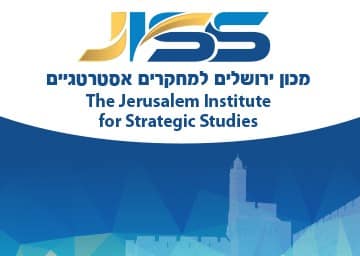
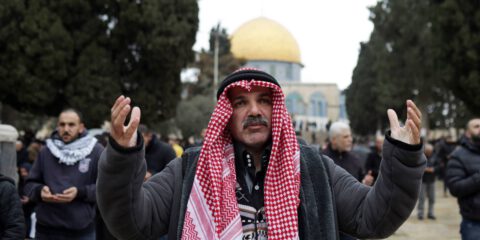
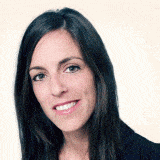
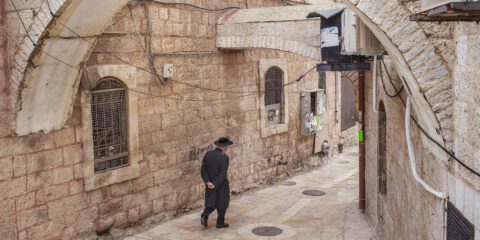
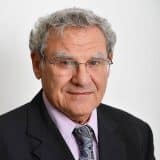
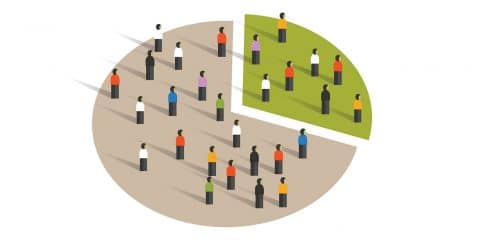
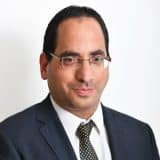
 - בניית אתרים
- בניית אתרים